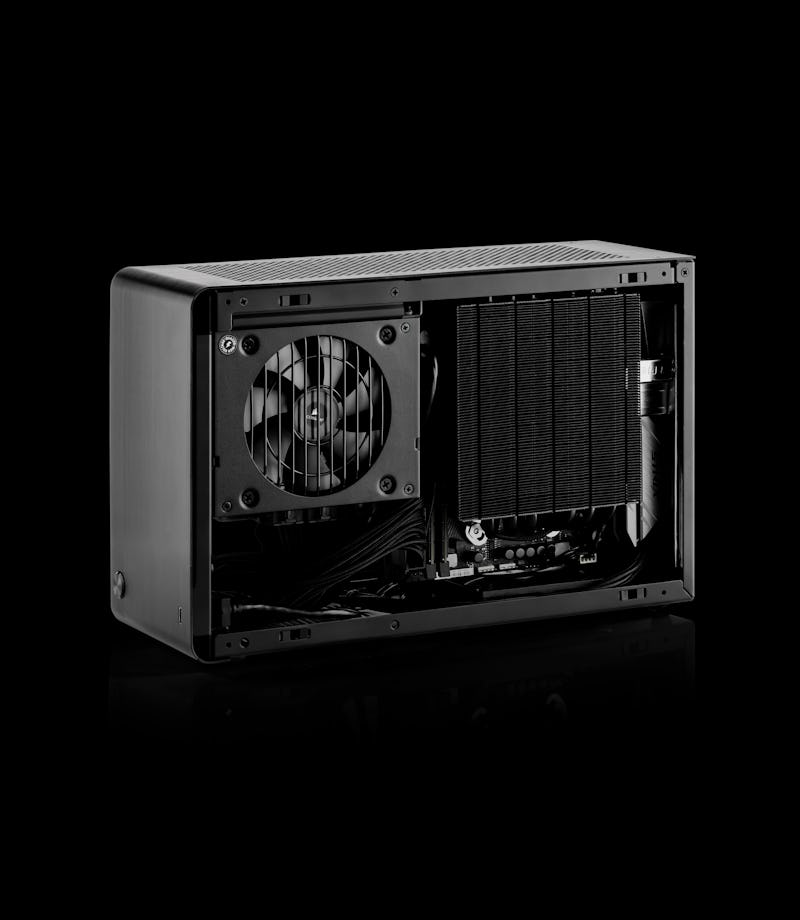What is SFF?
Small form factor (SFF) PCs have been around for a while, but in the early days, you could only get them from a company willing to make a custom design. Now, thanks to a burgeoning SFF subculture, you can build one yourself.
🎥: Optimum Tech
Update (February 5th, 5:00PM ET): We recommended the NZXT H1 PC case, which has been recalled for safety problems (electrical shorts) with its PCIe riser. We have removed that card and updated this post accordingly.
But why?
Before we get into the juicy details, you might wonder: Why go through the trouble of making a PC, but smaller?
Some people like the challenge (and it is challenging, as we'll see), while others just prefer a tidier desk. Others use these SFF machines like game consoles, so they have to look good if they're next to the TV.
Where to begin
The best place to start is with a case. You may have your eye on a beefy graphics card, or a particular motherboard, but the case dictates what you can fit so you should start there.
We've assembled a list of our favorites, but it's not exhaustive by any means.
Input may receive a portion of sales if you purchase a product through a link in this article. We only include products that have been independently selected by Input's editorial team.
Cooler Master NR200
An affordable SFF case from a big brand. This is a good case for a first-time build.
See at Coolermaster
Velka 7
A specialty case with a premium price tag, this case can rock a full-sized graphics card with ease. Will make your Xbox Series X cry.
See at Velkase
Sliger SM570
An expensive, highly specialized case that supports two single-slot or water cooled GPUs with PCIe bifurcation.
See at Sliger
Dan Case A4-SFX
A fan favorite, this case uses the classic sandwich design to keep things super tiny.
See at Dan Case
Up next: the components
Because of their small size, these cases require some specialized components. You'll need:
- A Mini ITX or DTX motherboard
- An SFX power supply
- A low-profile cooler
- A GPU that fits
🎥: Optimum Tech
ITX? DTX?
If you're a PC builder, you're probably familiar with the ATX and mATX sized motherboards. However, due to the size constraints, you'll need a Mini ITX or DTX motherboard to fit into these cases.
🎥: L1191
Baby power supplies
Just like motherboards, ATX power supplies are the standard, but for these cases you'll need something a little more specialized: An SFX or Flex power supply. These can deliver less wattage than their larger counterparts, so you'll have to factor that in when choosing your other components, like the CPU and GPU.
Low-profile coolers
There are two main ways to cool a SFF PC: With air, or with water. Designing a "custom loop" water cooling system for any PC is its own can of worms, so we're going to focus on air.
For that, you need a low-profile cooler, since many of these cases have the least space in the Z axis. Many cases will either suggest specific coolers, or provide a "maximum height" figure for you to use.
SFF GPUs
Some SFF cases are designed for full-length GPUs, though that's been somewhat thrown out the window with the sheer largess of both AMD and Nvidia's new top-end cards.
Luckily, there are now SFF-specific options for 30-series Nividia cards that are about to hit the market.
🎥: L1191
Resources
Building an SFF PC is kind of a huge pain in the ass, and there will be times when things you thought would fit have a corner or a side that blocks something else.
Luckily there are a few great resources out there. One of the best is the Reddit SFF community and its parts wiki.
There's also a pretty sweet ecosystem of custom parts on Thingiverse if you have a 3D printer, and I can tell you from experience, it's helpful!
